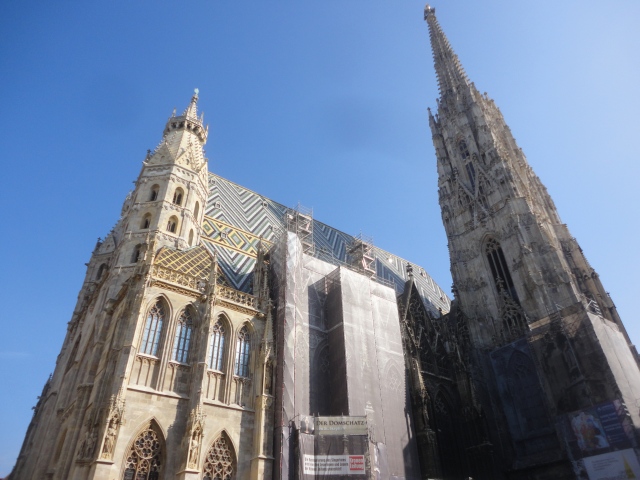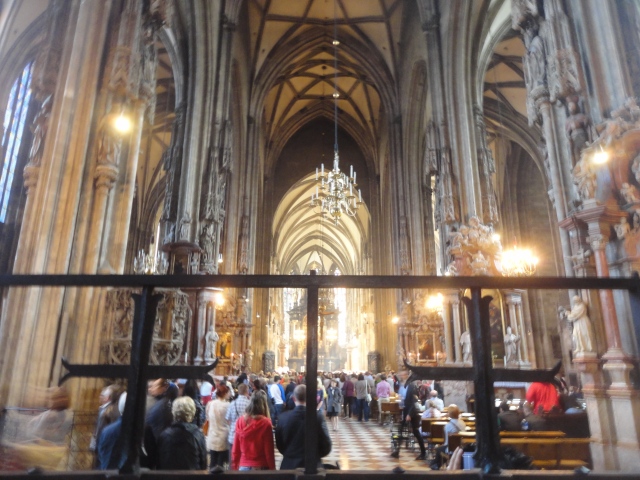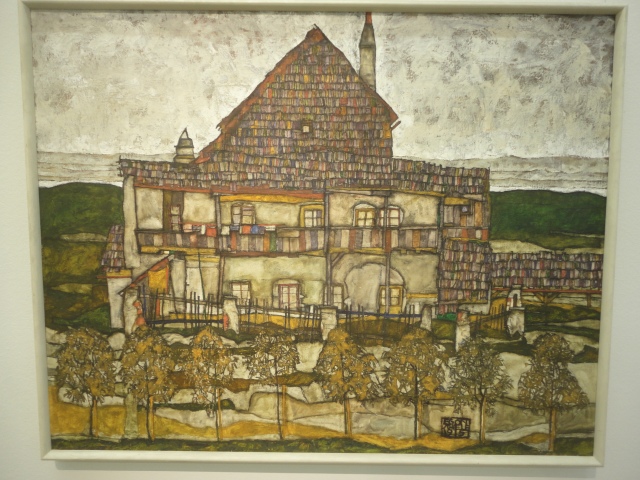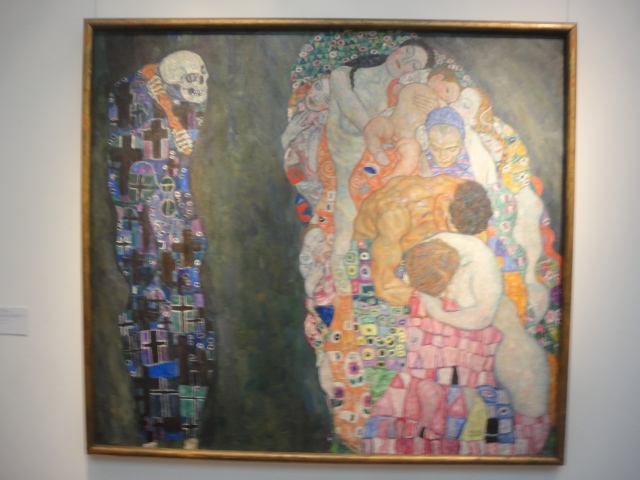After Salzburg, just like Mozart, our logical next stop was the big city of Vienna. After centuries as the seat of the enormously rich and powerful Hapsburg Empire, Vienna has been positively stuffed with palaces, museums (that used to be palaces), gardens (of palaces), cathedrals, and opera houses. Our first stop was perhaps the most famous of these palaces, the World Heritage-approved Schonbrunn.
This jewel of Hapsburg architecture reportedly was a large inspiration for Versailles, and Peter the Great’s palaces after that. It’s massive, full of one lavishly decorated, positively decadent room after another. An audioguide is included in the price of admission, and is full of interesting background and anecdotes about Franz Joseph I and Empress Elisabeth, whose furniture and design have been preserved to this day. Elisabeth in particular was an interesting woman, modern in her attitudes towards marriage and a great traveler, until she met an unfortunate end at an assassin’s hand.
Surrounding the palace is a massive, artfully laid out garden, with fountains and hilltop monuments and one of the world’s original zoos, since (heavily) renovated and panda-graced. After this we hopped the metro to the center of town and the soaring Gothic Cathedral of St. Stephen’s, packed with people, magic hour lightbeams illuminating its gloomy recesses through stained glass windows and some oppressive Phantom of the Opera-level organ playing when we entered. It was all a bit intense.
After a walk all through the historical center, full of the architecture I mentioned previously, we decided to check out one of the world-class museums in the city, and headed for the incredibly unique Museums Quartier, a large complex housing several museums in the city, art exhibits, and cafes all in one enclosed area. Just the main courtyard is worth a look alone. The museum we chose was the Leopold Museum, a modern art joint specializing in Vienna’s native sons Gustav Klimt and Egon Schiele. Both developed vivid, one-of-a-kind styles at the turn of the century, Klimt a bit more romanticized and incorporating medieval and even Japanese influences, and Schiele a disturbed, truly genre-defying use of color and line that found beauty in its overt ugliness. Several other contemporary but less famous artists caught my eye as well, none more than Koloman Moser’s bold colors and geometric compositions.
Once more, our last task of the day was to hunt down some local eats, and Vienna proved to be an excellent place to nab some street food and grab a bite lounging on the grass of one of its many parks. We assembled a street food feast of kassewurst, savory cheese-filled sausage, Jeonghee’s favorite mix of Asian noodles topped with savory doner kebab meat, and, of course, a nice thick fried pork schnitzel, all washed down with a cold Gosser lager, which may not measure up to Russia’s strangely excellent “Vienna Lager”, but which certainly did the trick after all that walking.







